Tudor Society member Corinna emailed us recently regarding the work of artist Ambrosius Benson and the tradition that the couples depicted in his "Elegant couples dancing in a landscape" were "Henry VIII with Anne Boleyn, the Duke of Norfolk with the Dowager Queen Margaret of Scotland, and Charles Brandon, the Duke of Suffolk, with the Dowager Queen Mary Tudor of France". We passed on Corinna's email to our resident art expert Roland Hui and he wrote this article...
Ambrosius Benson's 'Elegant Couples': A Painting of Henry VIII and His Court?
Historians and Art Historians specializing in the Tudor period are always on the search for portraits of 16th century 'lost faces'. Despite the abundance of images associated with Lady Jane Grey, for example, virtually none of them can confidentially said to be of her. Even a portrait, acquired not long ago by the prestigious National Portrait Gallery in London, has its critics who claim that as a posthumous work, its authenticity is questionable.1
The same could be said of Anne Boleyn whose portraiture is equally controversial. A half century after Sir Roy Strong, the former Director of the National Portrait Gallery, addressed Anne's likeness in his monumental study Tudor and Jacobean Portraits (1969), the dust has still not settled.2 Popular pictures linked to Anne seemed to have been exhausted for any new information, but what about those less known? Recently, an image of Anne, neglected in The Black Book of the Garter at St. George's Chapel, Windsor Castle was brought back to public attention,3 but are there possibly others?
A picture of interest is one painted by the Italian-Flemish artist Ambrosius Benson (c.1495-1550) and now called Elegant Couples Dancing in a Landscape (Utah Museum of Fine Arts). Far from being a depiction of anonymous 16th century revellers, there has been speculation that one of the figures is of Anne Boleyn. Furthermore, 'Anne' (second from the left) is joined by a most noble company it is said. She is partnered by Henry VIII no less, and with them are - from left to right - Thomas Howard, the third Duke of Norfolk who is shown with Margaret Tudor, the former Queen of Scotland, and Charles Brandon, the Duke of Suffolk, who is seen his wife Mary Tudor, the Queen Dowager of France.
The identification of the sitters is based on a tradition in the Howard family from the 17th century.4 But is there any truth to this? Obviously, the likenesses of the dancers need to be studied directly. While their facial features may have been based on actual persons, on close examination, there is no obvious association to their Tudor counterparts. Henry VIII, his two sisters, the two Dukes, and Anne Boleyn (based on a generally accepted likeness) have all been well documented, and they cannot be said to be the persons in Benson's picture.
There is also the problem of the revellers' costumes - they are Germanic, not English. The puffed and slashed sleeves as seen on the female figures, and the comparable white breeches on the gentleman on the far left, are typical of 16th century German courtly dress. Similar examples may be seen in a portrait of a lady by Lucas Cranach, done in 1525-1535, and in Matthäus Schwarz's Trachtenbuch (a compilation of drawings of Schwarz's own wardrobe) from the same period.
As well, Benson's Elegant Couples is historically problematic. The only time the picture - if it was indeed of Henry VIII and his court - could ever been painted was from 1515-1517. That was when Margaret Tudor, as Queen Dowager of Scotland, made a brief visit to her native England where she was reunited with her brother the King, and her sister Mary, now married to Charles Brandon. Such a date would be impossible for the inclusion of Anne Boleyn. At this time, she was abroad at the French court and did not return to England until 1522. She also did not become Henry VIII's mistress until four years afterwards.
There is also the matter of Ambrosius Benson's presence in England. Although Henry VIII welcomed Flemish artists such as William Scrots and the Horenbout/Hornbolte family (Gerard, Lucas, and Susanna) to his court, there is no record of Benson being in his employ, much less ever setting foot in England.
Lastly, it should be mentioned that the building depicted as a picturesque semi-ruin in the background of the painting looks Italian, not English.
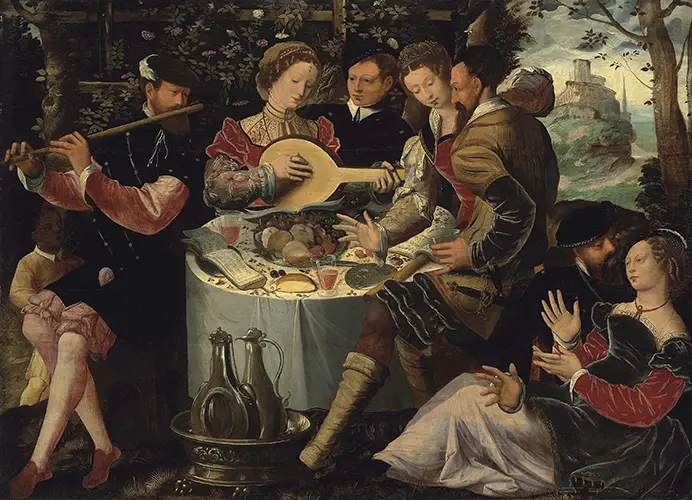
An Elegant Company With Musicians Seated At A Table With Fruit And Wine, In A Landscape attributed to Ambrosius Benson
Another picture that some claim is associated with Benson's courtly dancers is one entitled An Elegant Company With Musicians Seated At A Table With Fruit And Wine, In A Landscape (sold by Christie's, 2011). Is this again supposedly Henry VIII and his court? Apart from the fact that these persons do not resemble the dancing figures, they are also of another generation. Their clothing is of about the 1570s. The woman playing the lute is dressed similarly to Elizabeth I as painted by Nicholas Hilliard in 1572, and to Anna of Austria, Queen of Spain from 1570 to 1580. Although the Elegant Company With Musicians is attributed to Ambrosius Benson, it actually cannot be by him as he died in 1550. The painting appears to be a pastiche, a work done later by a follower of Benson's style.
Due to the lack of evidence associating these two paintings to Henry VIII and his court, the figures cannot be identified as Tudor notables, much less one being the infamous Anne Boleyn. We cannot know for what reason, the Howard family believed that the dancers were such an esteemed company, one that included their ancestor, the third Duke of Norfolk. Quite simply, it is a family tradition that cannot be substantiated.
Roland Hui is the author of The Turbulent Crown: The Story of the Tudor Queens (MadeGlobal, 2017) and The Mary Queens of Scots Colouring Book (forthcoming, 2019). He blogs about Tudor art and personalities at: Tudor Faces: https://tudorfaces.blogspot.ca.
Notes and Sources
- 'The true beauty of Lady Jane Grey' by Nigel Reynolds, Arts Correspondent, The Telegraph, March 7, 2007.
- Roy Strong, Tudor and Jacobean Portraits, London: Her Majesty's Stationary Office, 1969, I, pp. 5-7. See also: Eric Ives, Anne Boleyn, Oxford: Basil Blackwell, 1986, pp.49-56; G.W. Bernard, Anne Boleyn: Fatal Attractions, New Haven: Yale University Press, 2010, pp.196-200; Roland Hui, "A Reassessment of Queen Anne Boleyn’s Portraiture" (originally January 2000) at: https://tudorfaces.blogspot.com/2015/01/a-reassessment-of-queen-anne-boleyns.html
- Roland Hui, Anne Boleyn as 'the Lady of the Garter' (April 25, 2017) at: https://tudorfaces.blogspot.com/2017/04/anne-boleyn-as-lady-of-garter.html
- Ursula M. Brinkmann Pimentel, Dutch and Flemish Art at the Utah Museum of Fine Arts - A Guide to the Collection, 1993, pp. 39-40. However, the male figure in the centre has also been called King Francis I.

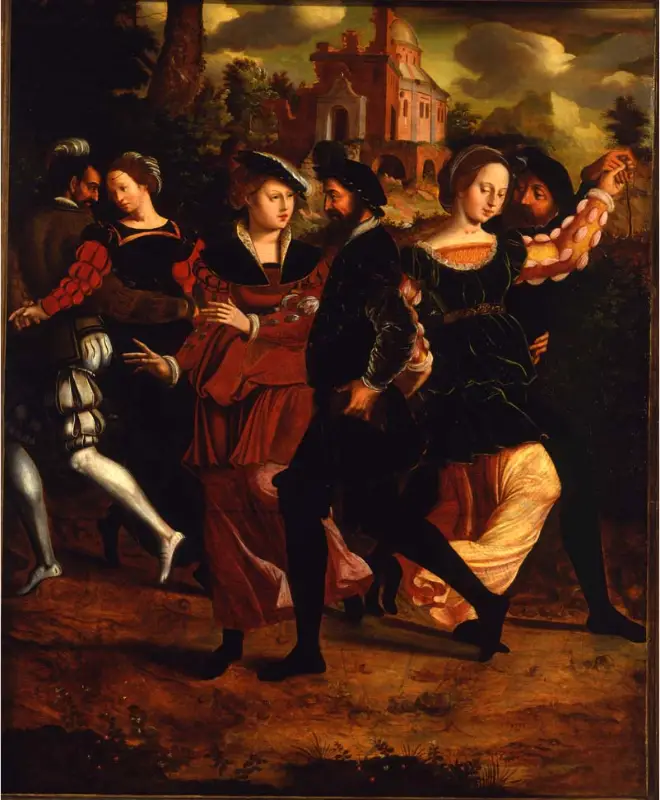

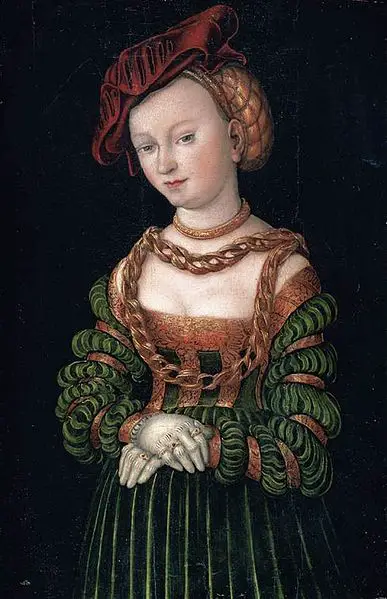
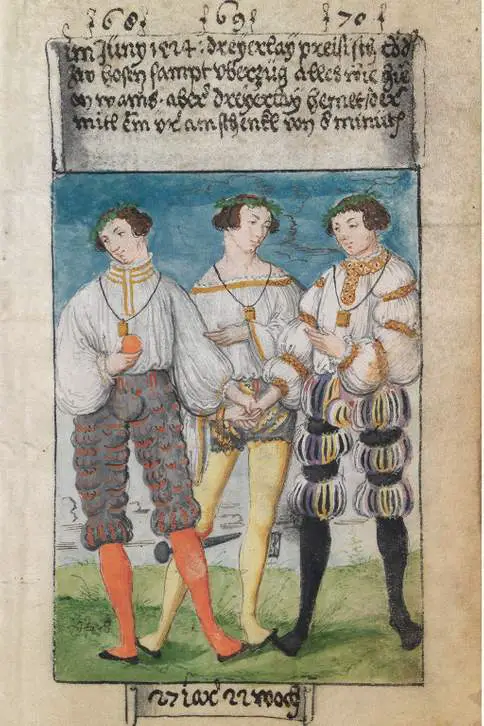
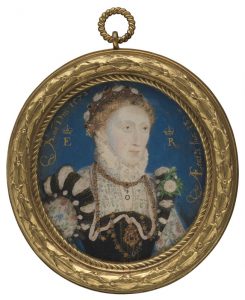
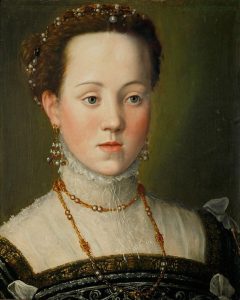
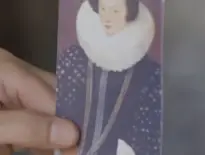
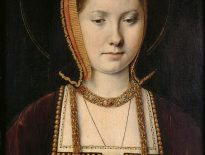
Very interesting! They certainly don’t look very much like them at all. Thanks for sharing. Michelle t
Thank you, Roland, this was very interesting as I have never seen this painting before and don’t know this artist.. Fascinating article, cheers.
Happy you enjoyed it RTL! : )